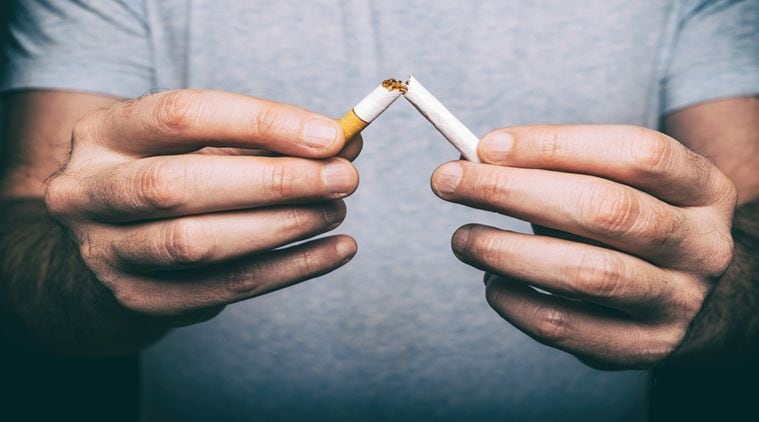When you've resisted the temptation and made it through to a morning coffee break without smoking, acknowledge the good work you've done with some positive self-talk or enjoy a movie with friends or family.

Smoking nearly affects all organs of the body and causes various deadly diseases, including cancer. However, since smoking tobacco is both, a physical addiction and a psychological habit, quitting it can be tough. The nicotine from cigarettes provides a temporary and addictive high, and eliminating that regular dose causes our body to experience physical withdrawal symptoms and cravings.
To successfully stop smoking, one needs to address the addiction as well as the routine that goes along with it. No matter how many times you have failed, with the right support and quit plan, any smoker can kick the addiction, says Dr Vikas Maurya, additional director and unit head, Department of Pulmonology and Sleep Disorder, Fortis Hospital Shalimar Bagh.
To begin with, one needs to fight is the urge to smoke in the mornings, which happens to be something most smokers fail to do. If you plan to quit smoking this World No Tobacco Day, which is observed on May 31 every year, doing the following can help you. The focus this year is on ‘tobacco and lung health’.
*Prepare yourself night (or days) before
First, remove all reminders and triggers of smoking. Search your car and house thoroughly to remove cigarettes, ashtrays, and other substances which may remind you of smoking. This is especially important if tomorrow is your quit day. Second, if you live with someone who smokes and is not quitting at the same time as you, ask them to not smoke in front of you, at least during the toughest parts of your quit time.
*Think about your morning routine: When and where did you smoke?
Do you feel the urge to smoke while reading the newspaper, at the kitchen table or on the drive to work? By taking note of such triggers, you can develop a plan to avoid or modify them.

*Mix up your morning schedule
Try to work out ways to change things up and disrupt your urge to smoke. If you’re used to waking up and having a cup of coffee with a cigarette, try taking a shower first or feeding the dog. You can even try some deep breathing exercises before that cup of coffee.
*Try to change up your breakfast menu
If you’re used to having a cigarette with orange juice and toast, try tea or hot water with lemon, and oatmeal, eggs, or yogurt with fresh fruit. Even swapping out the mug you use every day or where you sit can help alter the ritual. Secondly, it is better if you swap your first cigarette for a glass of water. This will change your routine and help you stay hydrated.
*Walk or exercise to get your body going
An early morning exercise routine will give you energy for the rest of the day. Rise a little earlier than usual and go outside for a walk, or do some simple stretching exercises at home to get your circulation going. Just a few minutes of activity can boost your energy levels and mindset for the day ahead.

*Change your driving route and habits while driving if smoking is linked with driving
If driving to work is one of your smoking triggers, try taking a different route and turn up the radio and sing along. It’s not easy to smoke while you sing, and great tunes can improve your mood as well. Secondly, if you’re at a traffic light and spot someone smoking, you may feel an urge. In this case, remind yourself that you’re no longer a smoker. Remember this: the urge to smoke will go away in three to five minutes. Let the time pass.
*Reward yourself for staying smoke free
When you’ve resisted temptation and made it through to a morning coffee break, acknowledge the good work you’ve done with some positive self-talk or enjoy a movie with friends or family. Every morning that you succeed is a victory on your journey to a smoke-free life, so focus on your success. Takes it one morning and then one day at a time.
Following these simple rituals, along with a person’s own will power, professional guidance, friends and family support, one can definitely get rid of smoking and its hazardous effects.
Source: Read Full Article
